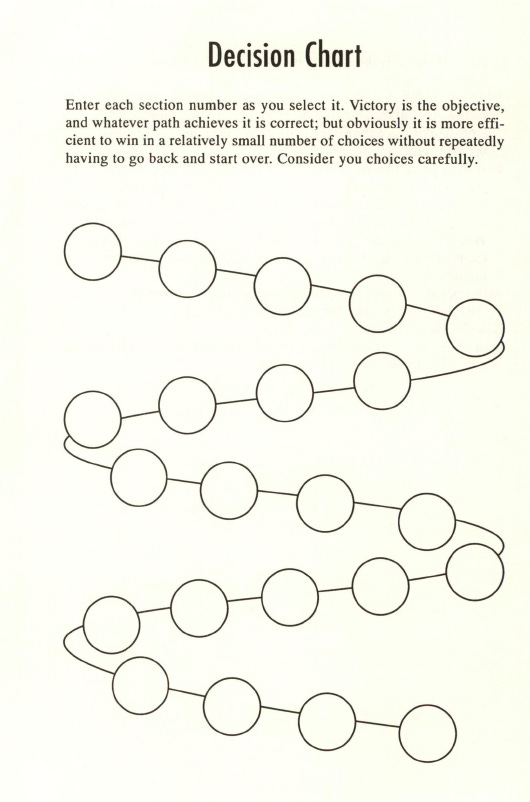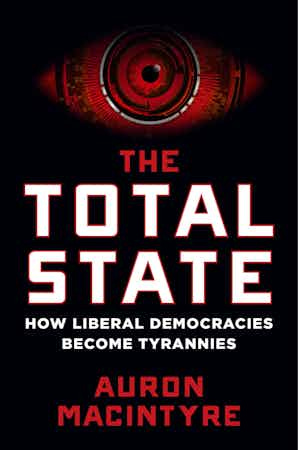Tasting History with Max Miller
Published Jun 4, 2024City/Region: Ötztal Alps
Time Period: c. 3230 B.C.Over 5,000 years ago, before the pyramids and Stonehenge, Ötzi the Iceman was killed in the Ötztal Alps near the border between modern day Austria and Italy. His body was soon covered with snow and ice, which helped preserve it for thousands of years until it was discovered in 1991.
There is a lot of speculation about what Ötzi’s life was like and what the circumstances surrounding his death were, but one thing that is known for sure is what his last meal was.
Researchers found red deer and ibex meat, einkorn, and ferns in Ötzi’s mummified stomach. This is just one version of what his last meal might have been, and while it’s plain compared to modern tastes, there’s a surprising amount of flavor in the meat and einkorn cakes, though I wouldn’t judge you if you added a bit of salt or seasoning.
(more…)
September 13, 2024
Recreating the Last Meal of Ötzi the Iceman
QotD: Cargo cult thinking and status seeking
The pioneering sociologist Thorstein Veblen’s Theory of the Leisure Class (1899) was the first systematic attempt to explain how status displays (e.g., conspicuous consumption) operate to communicate class membership among social elites. Most people never learn to think critically about such status-display behaviors, so that their emulation of the “elite” is thoughtless and unconscious. This behavior often takes the form of displaying symbols of wealth (e.g., designer-label clothing or luxury automobiles) as if mere possession of these symbols meant the same thing as actually being wealthy. Driving the same car or wearing the same clothing brands as a movie star, a software entrepreneur or a professional athlete is not the same as having millions of dollars in the bank, but we often see people who don’t seem to grasp this fact. The young guy with a $45,000-a-year job driving around in a new Cadillac Escalade wants to impress people by pretending to have wealth he doesn’t actually have. His luxury SUV is a status symbol, but the status he’s attempting to display is an illusion, if he’s leasing this vehicle for $1,800 a month (nearly half his annual income) while living with his mother. This is a cargo-cult type of behavior, and is in fact quite the opposite of behaviors that actually produce wealth. A young man who hopes to become wealthy would be best advised to live within his means, preferring to put money in the bank rather than engaging in ostentatious displays of a luxurious lifestyle. Nevertheless, we often see young people go deeply in debt to indulge their appetite for status symbols, and this cargo-cult mentality can also be witnessed in acts of criminal stupidity […]
Flashing actual stacks of money is the crudest possible status display, and I can 99.9% guarantee you that anyone who does something like this on social media is engaged in some kind of criminal behavior. People who obtain wealth by honest means are not prone to such shameless ostentation, and this kind of cargo-cult behavior exhibits a level of stupidity that is not usually compatible with economic success.
Robert Stacy McCain, “The Cargo Cult Mentality”, The Other McCain, 2019-12-20.
September 12, 2024
Infantry Combat: The Rifle Platoon by Col. John F. Antal
At anarchonomicon, kulak reviews Antal’s book from the 1990s:
There are a lot of weird experimental products in the world of Military Publishing … there’s no other subject for adults where professional volumes are published in the same format as children’s picture books where every other page is a full page image so that when you hold it in your hands you always have 50% picture/50% text, and yet that’s exactly how military atlases are formatted. They’re amazing!
Likewise military identification/vehicle guides, book length manuals or ship tours, or regimental campaign histories and memorabilia … These push the limits of the publishing medium, because they have to. The subject matter is complex, technical, tactile, risky, and multifaceted enough that aside from experimental horror novels or the vanishingly rare graphic novel … Nothing pushes the limits of paper so completely … indeed there are almost certainly some military history books that rival the experimental horror novel House of Leaves in terms of sheer medium breaking complexity.
And while Colonel John F. Antal hasn’t produced the most complex example of this… He may have produced one of the most experimental.
Infantry Combat: The Rifle Platoon is a simultaneous Military Tactics and Leadership crash course and semi-political argument about the wrong lessons that were learned from Operation Desert Storm (it was first published in 1995) in the format of a “Choose your own Adventure” novel.
And my god does it work. Its argument is incredibly well presented, its intangible concepts and ethos is really strongly conveyed, it teaches an impressive amount of theory and application despite NOT being a textbook of theory or doctrine …
And It just has no conceivable right to work as well as it works.
It actually does push the format of the “Choose your own adventure novel” incredibly far in terms of complexity. I’ve never seen one before that included several pages of charts just to track your decisions down the matrix.
The setup is primally simple.
You are US Army 2nd Lieutenant Davis. While it isn’t your first-First day, it is nearly your first after getting to the unit, and a very unlucky one at that.
You graduated West Point, attended ranger school, and this is day 2-3 of your first command.
America’s army is in an unnamed country and temporarily outnumbered as it is invaded, however they’re just dumb Arabs … its fine. Will probably get settled at the negotiating, and beside you have air dominance and the technological marvel of the US Military behind you.
Note this map is oriented 90 degrees off. North is on the left, east at the top. The triangles are a tank ditch meant to stop armoured vehicles (like a massive dry moat)
The main force isn’t going to be attacking you.
Your lone platoon of just 38 will be defending Wadi Al Sirree, a narrow mountain pass separate and a little ahead of your main force.
You might think this is a little exposed but they’re almost certainly going to exploit the open country with their armor and proceed up the dirt road to hit the 1st armoured battalion and the rest of your company. This is the fastest way they can proceed and exploit their momentary numbers in the theater before the rest of the US military arrives. Your pass isn’t valuable much at all for a ground invasion, and besides there’s a massive tank ditch and other obstacles that will deter the enemy. Your troops are really just there as an auxiliary to the land and the ditch. Maybe spot some artillery fire.
But hey! This is a great opportunity to see what war in the late 20th/early 21st century is about up close and personal. Just keep your head down, let your NCOs who have the experience do their jobs, and you’ll get a nice combat medal on your second day on the job. Just try not to get in people’s way.
As you can guess, the job of a Infantry commander is probably a bit more complex than that …
PIAT: The weapon that could punch through steel but needed nerves to match
Forces News
Published Jun 3, 2024Tanks, soft-skin vehicles, bunkers and buildings — the PIAT could deal with them all.
The PIAT — Projector, Infantry, Anti-Tank — was a British weapon that proved its worth during the Normandy Landings.
It was introduced in 1943, first seeing action in Tunisia, but was used to good effect in France, and despite its name it was a true multi-purpose weapon.
(more…)
QotD: The collapse of early civilizations in Mesopotamia
Early states were pretty time-limited themselves. [In Against The Grain,] Scott addresses the collapse of early civilizations, which was ubiquitous; typical history disguises this by talking about “dynasties” or “periods” rather than “the couple of generations an early state could hold itself together without collapsing”.
Robert Adams, whose knowledge of the early Mesopotamian states is unsurpassed, expresses some astonishment at the Third Dynasty of Ur (Ur III), in which five kings succeeded one another over a hundred-year period. Though it too collapsed afterward, it represented something of a record of stability.
Scott thinks of these collapses not as disasters or mysteries but as the expected order of things. It is a minor miracle that some guy in a palace can get everyone to stay on his fields and work for him and pay him taxes, and no surprise when this situation stops holding. These collapses rarely involved great loss of life. They could just be a simple transition from “a bunch of farming towns pay taxes to the state center” to “a bunch of farming towns are no longer paying taxes to the state center”. The great world cultures of the time – Egypt, Sumeria, China, whereever – kept chugging along whether or not there was a king in the middle collecting taxes from them. Scott warns against the bias of archaeologists who – deprived of the great monuments and libraries of cuneiform tablets that only a powerful king could produce – curse the resulting interregnum as a dark age or disaster. Probably most people were better off during these times.
Scott Alexander, “Book Review: Against The Grain“, Slate Star Codex, 2019-10-15.
September 11, 2024
The Korean War Week 012 – Green Light for Incheon – September 10, 1950
The Korean War by Indy Neidell
Published 10 Sep 2024Douglas MacArthur’s brazen plan to land two full divisions far behind enemy lines and sabotage the North Korean logistics finally gets the green light from the President and the Joint Chiefs of Staff, despite the myriad difficulties everyone knows the operation will face. It is to go off next week. In the field, the North Korean offensive against the Naktong Bulge continues, though it seems to be running out of steam, and the UN forces get beefed up as the first British troops to arrive in Korea join the battle line.
Chapters
01:03 Recap
01:23 KPA Offensive and Counterattacks
07:31 JCS Approve Incheon
10:33 Eugene Clark Investigates
13:32 More UN Forces for the fight
15:00 Summary
15:24 Conclusion
18:14 Call to Action
(more…)
⚔️Parry! ⚔️Parry! 🗡️Thrust! 🗡️Thrust! GOOD!
Jill Bearup
Published Jun 3, 2024They’re MEN. They’re men in TIGHTS (tight tights!) Please enjoy the extended edition of this video with many random digressions that will mostly be cut for the public version 😀
00:00 Robin Hood: Men in Tights
00:50 The Plot, It Goeth Thusly
03:03 Prince of Thieves/Men in Tights/Maid Marian and Her Merry Men
04:50 What kind of fight do you like?
06:19 Setup for the ending fight
07:03 The Prince of Thieves fight
07:38 The Adventures of Robin Hood fight
07:53 FIGHT!
08:53 My favourite thing (compare and contrast)
10:03 The first phrase
10:39 The second phrase
11:24 The third phrase
11:43 The fourth phrase
12:29 The fifth phrase
12:40 and FIN
13:13 I love it, I really do
14:17 Book chat
15:52 Men hitting each other with sticks
17:40 Matching vibes
18:46 Just Stab Me Now audiobook update
(more…)
QotD: The preposterous tactics of George R.R. Martin’s Dothraki nomads
We do not see the Dothraki engage in large-scale warfare in the books; we see the aftermath of such fighting (AGoT, 555ff) or it occurs “off-screen” (ASoS, 487), but we do not see it. The closest we get is Jorah’s description of them, that they are “utterly fearless … [they] fire from horseback, charging or retreating, it makes no matter, they are full as deadly … and there are so many of them” AGoT, 325-6). Evidently they also scream on the attack, since their warriors are repeatedly called “screamers”.
As a description, it is hard for this to be very much wrong because it is so very vague, but the attentive reader will note that Jorah’s assertion that there are “so many” must be wrong for either Eurasian Steppe Nomads or Great Plains Native Americans, both of whom were routinely outnumbered by settled enemies, often dramatically so. Let’s put a pin in that, though, because of course while Martin gives only vague description of Dothraki warfare, the show, Game of Thrones, shows it to us on screen quite vividly.
We see a bit of Dothraki warfare in S6E9 when Daenerys’ Dothraki charge down the Sons of the Harpy at Mereen, but the really sustained look at how they fight has to wait for S7E4 and the Loot Train Battle and S8E3 and the Battle of Winterfell, both of which, happily, we have already discussed! In all three cases, the Dothraki do exactly the same thing. They charge, in a pell-mell rush, while giving high-pitched war-calls. While some of the Dothraki may fire arrows on the approach (they have them stand up to do this, which is not how actual Mongols or Native Americans fired from horseback; it looks cool and is stupid, like most of Game of Thrones season 7 and 8), they otherwise charge directly into contact and begin fighting from horseback with their arakhs as the primary weapon.
This is not how horse-borne nomads fought.
As we’ve discussed repeatedly before, the key weapon for Steppe nomads was the bow, shot from horseback at high speed (on this, note May, “The Training of an Inner Asian Nomad Army” JMH 70 (2006) and Mongol Art of War (2007)). Thus the crucial maneuver was the caracole, where the rider approaches the target at high speed, firing arrows as he goes, before making an abrupt turn (it is actually the turn that is technically called a caracole, but the whole tactic goes by this name) and retreating, before trying again. Pulling this tactic off en masse required a great deal of both individual skill at horsemanship and archery, but also quite a lot of group cohesion and coordination, since a collision of horses at speed is very likely to be fatal for everyone – humans and horses – involved.
This tactic can then be repeated – charge and retreat, charge and retreat – until the psychological toll on the defender becomes too great and they either break and retreat or else charge out to try to catch “retreating” nomads. In either case, it was at that moment when the Steppe nomads could press home and destroy the disorganized enemy. These tactics were brutally effective, but they were also a necessary casualty control measure. Shock combat – that is massed melee combat in close quarters – is simply far too lethal for low-population nomadic societies to sustain in the long-term on the regular (a hoplite battle might result normally in c. 10% casualties for instance (but note this discussion of that figure) – think of what that would mean in a society where 100% of adult males participate in each battle – you’d run out of men pretty quickly!).
And fascinatingly, we can actually see that calculus play out in North America, where the arrival of firearms, which suddenly make pitched “missile exchange” battles (especially on foot) as lethal as shock combat (it seems notable that the introduction of musketry into Old World warfare did not come with a significant increase or decrease in battlefield lethality, at least until the rifled musket – on that, see B. Gibbs, The Destroying Angel (2019), but also note E.J. Hess, The Rifle Musket in Civil War Combat: Reality and Myth (2008)), the pitched battle vanishes. It was simply too lethal to be a viable option in the long term for societies with low population density and very high military participation rates.
Instead, the raid came to dominate warfare on the Great Plains, with mass-casualty events generally being restricted to situations where a raiding party caught an enemy group unawares (McGinnis, op. cit., 45-6, 57-9). To be clear, that’s not to say the Great Plains Native Americans were peaceful, after all the goal of all of this raiding was to cause one of those rare mass-casualty surprise attacks and – as McGinnis notes again and again, warfare was part of the Plains Native American way of life, as the social status of males was directly and powerfully tied to success in war.
In short, the need to keep lethality relatively low is one of the most important factors which shaped nomadic horse-borne warfare, both on the Steppe and on the Great Plains. And here is where I think that even Martin’s description – which could, if read with friendly eyes, be taken as a description of the Steppe caracole described above – falls short: the Dothraki are dangerous because they are so many. But actual nomadic warfare was fundamentally conditioned by the shortage of men created by the low population density of the Steppe or the Great Plains. This weakness could be somewhat made up for by making every male into a warrior, but only if casualty rates remained low. A war of attrition with settled peoples would wear the nomads out quickly, which is why such attritional warfare was avoided (unless you are the Mongols, who use the sedentary armies of conquered states, notably using the armies of Northern China to conquer Southern China; that said, Drogo is clearly not Chinggis Khan or any such sort of Khal-of-Khals)
So where does this model of warfare come from? Well, when it comes to the show, we needn’t actually look far, because the creators tell us. The director of the episode, Matt Shakman, noted in an interview that his primary reference for the Dothraki charge was John Ford’s Apache attack in his 1939 film Stagecoach (you can see the scene he means here). And in the S7 special feature, “Anatomy of a Scene: The Loot Train Attack”, David Benioff notes that the charge “definitely got a bit of that western feel” while VFX producer Steve Kullback says, of the battle, it’s “sort of like Cowboys and Indians”.
In Stagecoach (1939), the Apache aren’t a real humanized culture, but an elemental force of destruction. Their charge at the titular stagecoach is essentially mad and heedless of all losses (in the same featurette, Camilla Naprous, Game of Thrones‘ horse master, describes the Dothraki as “they’re just these absolute mad men on horses”, in case you thought that connection was only subtext). The position of “Indians” as particularly “rapey” is also explicit in Stagecoach, where the one of the white male defenders of the coach saves his last bullet to spare the one woman, Mrs. Mallory, from being captured and raped by the approaching cavalry [NR: I think Dr. Devereaux means “Indians” here, but given the historic reputation of the cavalry …] (the concern about white women being raped by non-white men being a paramount fixation of early American film; see also The Birth of a Nation (1915); or, you know, don’t.) And the tactics (or lack thereof) of the Dothraki, charging madly forward with no order or concern for safety, also map neatly on to Stagecoach‘s Apache attack (and not on to actual Apache attacks).
I don’t think this lazy use of old Western tropes is limited to merely the show, however. Having written this far, I find myself convinced that there is a longer article or perhaps a video-essay waiting to be written by a different sort of scholar than myself – that is, a film historian – on how Martin’s depiction of the Dothraki and their world is fundamentally rooted in the racist tropes of the Hollywood Western and its portrayal of Native Americans in a frontier environment where, as Sergio Leone put it, “life has no value“. Quite a lot of parallels with Martin’s Dothraki emerge after even a brief overview of the representation of Native Americans in film. The emphasis on taking captives (especially white women) to no apparent purpose besides sexual violence, the distinctive “screaming” of Dothraki warfare (which, yes, Native Americans used a range of intimidating war cries, but so did basically everyone else in the pre-modern world, so why are the Dothraki the only ones who do it in Westeros?), its lack of tactics or order, and – as we’ve discussed already – the grossly simplified form of dress all seem to have their roots in racist Hollywood depictions of Native Americans. The Dothraki Sea is, essentially a “Cavalry and Indian Story” with the cavalry removed.
That is not a pure creation of Benioff and Weiss. The show simply takes that subtext and makes it text.
Bret Devereaux, “Collections: That Dothraki Horde, Part IV: Screamers and Howlers”, A Collection of Unmitigated Pedantry, 2021-01-08.
September 10, 2024
Chilling effect (with a British accent) – “No one is now sure what they are allowed to say”
Spaceman Spiff makes a bid to star in one of Gauleiter Keir Stürmer’s big show trials, coming far too soon to a town hall near you:
In Britain many of us now walk on eggshells.
The country and its systems are broken. Free speech is being outlawed. Many are frightened to say anything, although it doesn’t stop them noticing and thinking.
Recent emphasis on invented categories of offence — misinformation, disinformation and now malinformation — mean almost anything can come under the purview of the State and its informers, from ill-timed comments to jokes and humorous observations.
Famously, memes based on simple observation are admissible in Britain’s world-famous show trials, including this one no doubt:1
It is difficult to know what people are thinking when they endorse the importation of people who want to kill them for their lifestyle choices.
Everything must be monitored because less and less can be tolerated by those in positions of authority. Their narratives are failing, and they are panicking. They are getting desperate.
Noticing is verboten
Many of the topics that trigger the strongest response by the British Government are simply unpopular policies that normal people can no longer ignore.
More accurately, policies that directly affect growing numbers of law-abiding taxpayers who did not vote for them.
Do not discuss immigration
Mass immigration is the supreme example. Britain’s cities are being flooded with “asylum seekers”, most of whom are economic migrants with no right to settle in the country.
Many are alien peoples from distinct cultures with no connection to Europe and a poor track record of assimilation.
They are aided by an army of well-funded human rights lawyers who distort laws designed to help the genuinely dispossessed, which most immigrants are not.
Thanks to our generosity many privileges are extended to foreigners that are unavailable to natives such as free housing and financial help on the understanding these are used sparingly and temporarily to aid the desperate.
These myriad of kindnesses did not emerge to serve those who want the benefits of first-world living while dodging the corresponding costs; the development of high-trust social structures, the communal spirit that transcends tribalism, and the selflessness it all requires. These are rare phenomenon much of the world cannot produce or maintain, and they are being squandered in Western nations by the selfish obsessed with demonstrating their own virtue.
No serious discussion of immigration is tolerated at any level in Britain. However, this does not stop the erosion of goodwill upon which most of their schemes depend. The generosity they abuse is a limited resource and the magnanimity upon which it depends is evaporating quickly.
1. Many are being jailed in Britain for posting memes and related social media content. The judges often go to some lengths to confirm it is not the content of the material they are questioning as they are perfectly legal, but the perceived intent behind the posting itself.
This unprecedented legal descent into clairvoyance, hate speech and arrogance is relatively new. It will not age well and tells us more about the decline in competency in the judiciary than anything else. Standards are clearly not what they once were.
To put this kind of absurd reasoning on display in irremovable public court records speaks to the level of delusion and arrogance we are now dealing with in Britain. Our social betters are truly lost in a world of their own.
“The world has gone mad. But nothing is as crazy as the AI news”
Ted Gioia is covering the AI beat like nobody else. In this post he shares several near-term predictions involving AI development and deployment:
The world has gone mad. But nothing is as crazy as the AI news.
Every day those AI bots and their human posse of true believers get wilder and bolder — and recently they’ve been flexing like body builders on Muscle Beach.
The results are sometimes hard to believe. But all this is true:
- The movie trailer for Francis Ford Coppola’s new film got pulled from theaters because “the studio had been duped by an AI bot“.
- Just one person in North Carolina was able to steal $10 million in royalties from human musicians with AI-generated songs. They got billions of streams.
- The promoters of National Novel Writing Month angrily declared that opposition to AI books is classist and ableist.
- Children are now routinely using AI to make nude photos of other youngsters.
- Nearly half of the safety team at OpenAI left their jobs — and almost nobody seems to care or notice.
- AI tech titan Nvidia lost a half trillion in market capitalization over the course of just a few days — including the largest daily decline in the history of capitalism.
- By pure coincidence, Nvidia’s CEO sold $633 million worth of stock in the weeks leading up to the current decline.
We truly live in interesting times — which is one of the three apocryphal Chinese curses.
(The other two, according to Terry Pratchett, are: “May you come to the attention of those in authority” and “May the gods give you everything you ask for”. By tradition, the last is the most dangerous of all.)
I get some credit for anticipating this. On August 4, I made the following prediction:
But it’s going to get even more interesting, and very soon. That’s because the next step in AI has arrived — the unleashing of AI agents.
And like the gods, these AI agents will give us everything we ask for.
Up until now, AI was all talk and no action. These charming bots answered your questions, and spewed out text, but were easy to ignore.
That’s now changing. AI agents will go out in the world and do things. That’s their new mission.
It’s like giving unreliable teens the keys to the family car. Up until now we’ve just had to deal with these resident deadbeats talking back, but now they are going to smash up everything in their path.
But AI agents will be even worse than the most foolhardy teen. That’s because there will be millions of these unruly bots on our digital highways.
Why the US Left Vietnam
Real Time History
Published Apr 19, 2024With violent anti-war protests at home and discipline problems on US bases, President Nixon promises to withdraw American troops from the Vietnam War, but that doesn’t mean an end to the fighting. As US troop numbers drop, the war expands across borders and in the air as more weapons are pumped into the South.
(more…)
QotD: Contempt of court
It’s a funny thing — or not — but due to the sad state of prison security in this country, a judge can essentially threaten a person with rape and severe beatings. How about that? One more reason to live clean and avoid making waves.
Steve H., “Was I Wrong About Cooper? Don’t Think So”, Hog On Ice, 2005-07-06.
September 9, 2024
Update your Overton Window – “[A]nyone to the immediate right of 2024 liberal democracy is a fascist”
In Niccolo Soldo’s weekly commentary, a few insights into European “mainstream” political views on extreme right-wing crypto-fascists like … everyone who doesn’t support far left positions:
If you think that US media is bad, you should check out just how awful their German colleagues are. Their media is filled to the brim with daily hysteria about the Russians, Nazis, fascists, and so on. Every single day is a struggle to survive against these existential threats.
To the mainstream German media, a conservative Christian Democrat (the kind that ruled much of Western Europe during the Cold War) like Viktor Orban is a fascist in disguise. To the mainstream German media, a statist centrist like Vladimir Putin is Hitler without the disguise. A 90s Clinton Liberal like Donald Trump is both.
Thankfully, Der Spiegel reached out to writers and researchers who specialize in fascism to tell us that all of the above are fascists, and some are Nazis too:
The reversion to fascism is a deep-seated fear of modern democratic societies. Yet while it long seemed rather unlikely and unimaginable, it has now begun to look like a serious threat. Vladimir Putin’s imperial ambitions in Russia. Narendra Modi’s Hindu nationalism in India. The election victory of Giorgia Meloni in Italy. Marine Le Pen’s strategy of normalizing right-wing extremism in France. Javier Milei’s victory in Argentina. Viktor Orbán’s autocratic domination of Hungary. The comebacks of the far-right FPÖ party in Austria and of Geert Wilders in the Netherlands. Germany’s AfD. Nayib Bukele’s autocratic regime in El Salvador, which is largely under the radar despite being astoundingly single-minded, even using the threat of armed violence to push laws through parliament. Then there is the possibility of a second Trump administration, with fears that he could go even farther in a second term than he did during his first. And the attacks on migrant hostels in Britain. The neo-Nazi demonstration in Bautzen. The pandemic. The war in Ukraine. The inflation.
Meloni, Modi, Milei, Wilders, Bukele … all are suspected of crypto-fascism here.
Trump? “Fascist”, says neo-conservative Robert Kagan:
In May 2016, Donald Trump emerged as the last Republican standing following the primaries, and the world was still a bit perplexed and rather concerned when the historian Robert Kagan published an article in the Washington Post under the headline “This is how fascism comes to America.”
The piece was one of the first in the U.S. to articulate concerns that Trump is a fascist. It received significant attention around the world and DER SPIEGEL published the article as well. It was an attention-grabbing moment: What if Kagan is right? Indeed, it isn’t inaccurate to say that Kagan reignited the fascism debate with his essay. Interestingly, it was the same Robert Kagan who had spent years as an influential member of the Republican Party and was seen as one of the thought leaders for the neocons during the administration of George W. Bush.
The article has aged well. Its characterization of Trump as a “strongman”. Its description of his deft use of fear, hatred and anger. “This is how fascism comes to America, not with jackboots and salutes,” Kagan wrote, “but with a television huckster, a phony billionaire, a textbook egomaniac ‘tapping into’ popular resentments and insecurities, and with an entire national political party – out of ambition or blind party loyalty, or simply out of fear – falling into line behind him.”
Jason Stanley, the Jacob Urowsky Professor of Philosophy at Yale University, says that fascism has already come to America:
Six years ago, Stanley published a book in the U.S. called How Fascism Works: The Politics of Us and Them. The German translation only appeared two months ago, a source of annoyance for Stanley. He also has German citizenship and says that he loves the country despite everything.
So how does fascism work? Modern-day fascism, Stanley writes, is a cult of the leader in which that leader promises rebirth to a disgraced country. Disgraced because immigrants, leftists, liberals, minorities, homosexuals and women have taken over the media, the schools and cultural institutions. Fascist regimes, Stanley argues, begin as social and political movements and parties – and they tend to be elected rather than overthrowing existing governments.
Timothy Snyder says that both Trump AND Putin are fascists:
Timothy Snyder speaks thoughtfully and quietly, but with plenty of confidence. Putin is a fascist. Trump is a fascist. The difference: One holds power. The other does not. Not yet.
“The problem with fascism,” Snyder says, “is that it’s not a presence in the way we want it to be. We want political doctrines to have clear definitions. We don’t want them to be paradoxical or dialectical.” Still, he says, fascism is an important category when it comes to understanding both history and the present, because it makes differences visible.
Austrian Political Scientist Natascha Strobl says that fascists are now everywhere:
But this kind of violence can be seen everywhere, says the Austrian political scientist Natascha Strobl. It merely manifests itself differently than it did in the 1920s, when, early on in the fascist movement in northern Italy, gangs of thugs were going from village to village attacking farmer organizations and the offices of the socialist party, killing people and burning homes to the ground. Today, says Strobl, violence is primarily limited to the internet. “And it is,” says Strobl, “just as real. The people who perpetrate it believe they are involved in a global culture war, a struggle that knows no boundaries. An ideological civil war against all kinds of chimeras, such as ‘cultural Marxism’ or the ‘Great Replacement’.”
For Bulgarian think-tanker Ivan Krastev, AfD is a fascist organization:
It is all rather perplexing. Back in Berlin, Ivan Krastev makes one of his Krastevian jokes. An American judge, he relates, once said that he may not be able to define pornography, “but I know it when I see it”. The reverse is true with fascism, says Krastev: It is simple to define, but difficult to recognize when you see it.
The “F-word”. F as in fascism or F as in “Fuck you”. It is permissible, as a court in Meiningen ruled, to refer to Höcke as a fascist. The question remains, though, what doing so actually achieves.
So there you have it: anyone to the immediate right of 2024 liberal democracy is a fascist.













